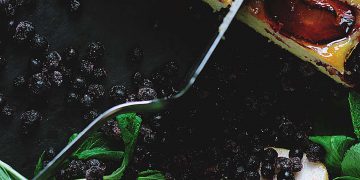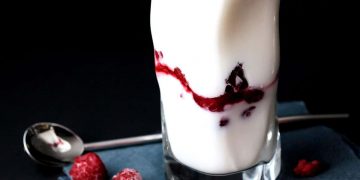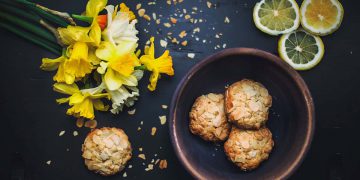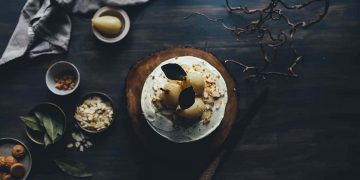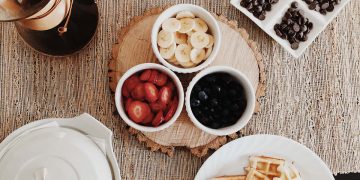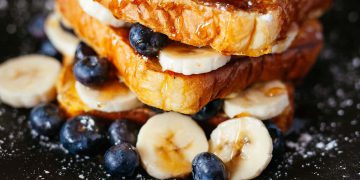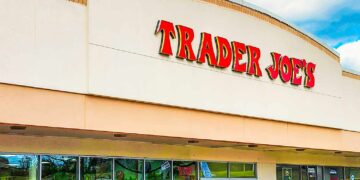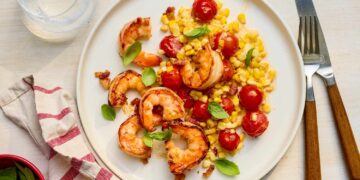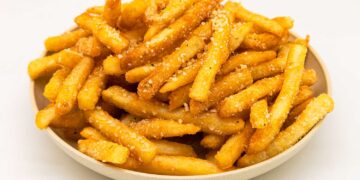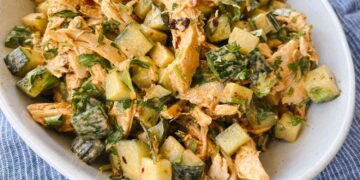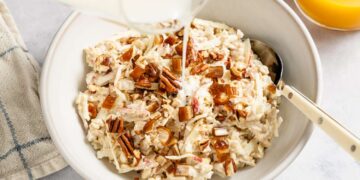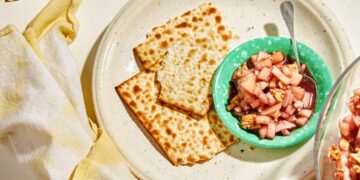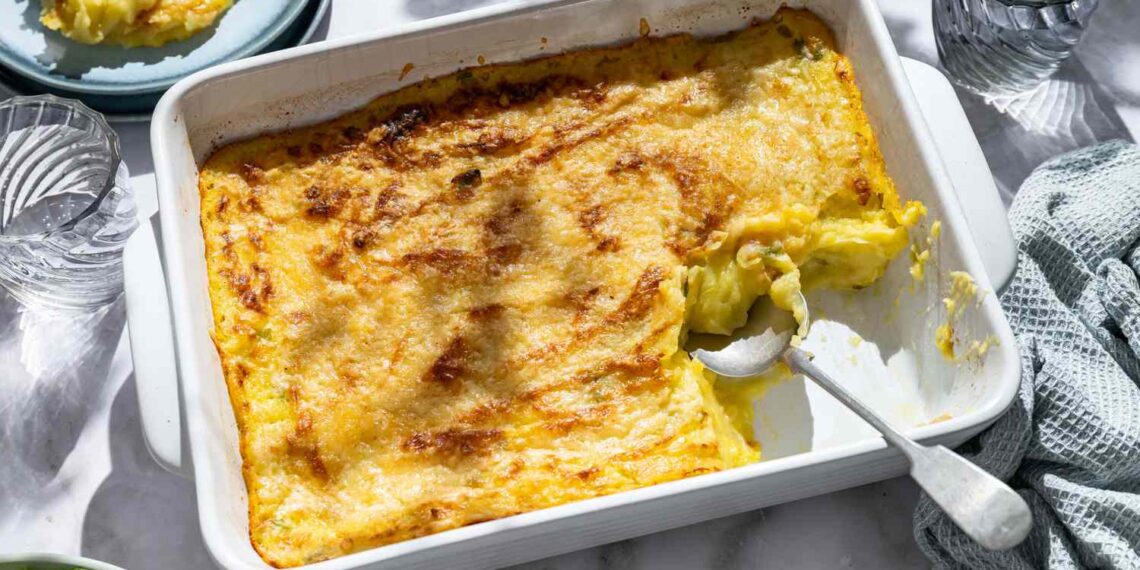
My dad owned an Irish-style pub for years and was so devoted to making it the best pub he could that he periodically went to Ireland on “beverage research” trips. I was lucky enough to go along on a few of these trips, helping my dad find small, family-owned establishments that he modeled his own pub after. He’d sample their Guinness, chat with fellow publicans (pub owners), and share jokes and stories with the locals while I studied the pub menus and tasted the outstanding scratch-cooking of rural Ireland.
One of my favorite meals we shared was in a pub in a small rural town in the west of Ireland. It had a traditional thatched roof, enormous fireplace with a smoldering peat fire, great pints of beer, and amazing food, including the best potatoes of any kind either of us had ever had.
The ironic thing is, we didn’t even order them. We had ordered a big lunch—roast duck for my dad and apple-stuffed pork loin for me—and just as we were tucking in, the server plunked down a large gratin dish of mashed potatoes swathed in cheddar, the edges still popping and spitting with butter. We protested, but were informed that they came with every entrée. “Wow,” I thought, “these really are my people.”
The mashed potatoes were molten hot, shot through with green onion, and contained what I guessed was roughly two tons of butter. They had a silky-smooth texture that was contrasted perfectly by the slightly crispy blanket of cheddar that was spread over the top. Sure, the entrées were really very nice, but those mashed potatoes were a major bonding moment for me and my dad.
As we rolled out of the pub at the end of lunch, I asked the owner how the mashed potatoes were made. “Oh, it’s just the good potatoes, isn’t it? Don’t go buying ‘em cheap,” she advised. She proceeded to reveal some of their other mashed potato secrets, but only when I pressed her. She seemed so amused, making it sound as if it was the most obvious thing in the world—so common, in fact, they gave them away for free. Those potatoes may have been an afterthought to them, but to me and my dad, they were everything.
I’ve been making these baked “Irish-style” mashed potatoes for almost 15 years now, and I still think of my dad and our little pub research trips every time I pull the glorious cheese-crowned casserole dish out of the oven. It’s more than just good potatoes, but not much more.
Simply Recipes / Mihaela Kozaric Sebrek
Tips for Making This Irish Baked Mashed Potato Casserole
- Buy high-quality, locally-grown potatoes for the best flavor. I like Yukon Golds, but German Butterball or Kennebec are great here, too.
- Boiling the potatoes with the skins on prevents them from becoming waterlogged when cooking and helps retain more of the flavor of the potatoes in the finished dish.
- If your oven has a convection setting, this is a great time to use it to get the cheese extra-crispy. But if your oven doesn’t have this option, you can broil the casserole at the end of cooking instead.
- Substitute any other melty cheese for the Irish cheddar if you prefer—Gruyère, fontina, Havarti, and smoked provolone all work well with this recipe.
- If you’re serving this casserole with roast beef, stir 3 tablespoons of creamed horseradish into the mashed potatoes along with the milk.
Making This Recipe Ahead
To make this recipe ahead, prepare the recipe as directed but increase the milk to 1 1/2 cups. Assemble the casserole through the end of step 5 as directed and let cool completely before covering and storing, unbaked, in the refrigerator for up to 3 days. Allow the casserole to stand at room temperature for 1 hour before baking.
Simply Recipes / Mihaela Kozaric Sebrek
More Irish Classics
If your oven doesn’t have a convection setting, at the end of baking, place the casserole 4 inches below the broiler element and broil for a few minutes to get the cheese extra-crispy.
Cook Mode
(Keep screen awake)
-
6 tablespoons salted cultured butter, divided
-
2 1/2 pounds Yukon Gold potatoes, unpeeled, cut into 2-inch chunks
-
1 tablespoon salt, plus more for seasoning
-
1 large clove garlic
-
3 green onions, sliced
-
1 cup whole milk or heavy cream
-
1 teaspoon freshly grated nutmeg, divided
-
1 pinch cayenne pepper
-
Freshly ground black pepper
-
1 cup (4 1/2 ounces) grated Irish cheddar cheese
-
Preheat the oven to 400°F on the convection setting (if available).
Rub 1 tablespoon of the butter on the bottom and sides of a 1 1/2 to 2-quart casserole dish; set aside.
-
Boil the potatoes:
Combine the potatoes, salt, and garlic clove in a large pot. Add enough cold water to cover the potatoes by a few inches.
Bring to a boil over high heat. Reduce heat to medium-high and cook until the potatoes are very tender when pierced with a fork, 15 to 20 minutes. Drain in a colander set in the sink and leave the potatoes in the colander to steam-dry for 10 minutes.
-
Cook the green onions:
While the potatoes are drying, add the remaining 5 tablespoons butter to the empty pot used to boil the potatoes and melt over medium heat. Add the green onions and cook until fragrant, 1 minute. Remove from the heat and set aside.
-
Mash the potatoes:
Pass the potatoes and garlic clove through a potato ricer or food mill into the pot with the butter and green onions; discard the potato skins. Alternatively, pull the skins off of the potatoes with your fingers and mash the potatoes in the pot with a potato masher until smooth. Fold the potatoes into the butter mixture with a rubber spatula until evenly mixed.
-
Add the milk and assemble the casserole:
Gently fold the milk into the potatoes in 3 additions. The mixture will be very loose but it will set up as it bakes. Add 1/2 teaspoon of the nutmeg and the cayenne pepper. Season to taste with salt and pepper.
Spoon the potato mixture into the prepared casserole dish and sprinkle the cheese over the top.
-
Bake:
Bake until the potatoes puff slightly and the cheese is melted and browned in places, about 30 minutes. If you oven does not have a convection setting, you can broil the casserole until browned on top after baking, 1 to 3 minutes. Sprinkle the remaining nutmeg over the top of the potatoes and serve immediately.
Leftovers can be kept, covered, in the refrigerator for up to 5 days. Microwave until piping hot to reheat.
Love the recipe? Leave us stars and a review below!
| Nutrition Facts (per serving) | |
|---|---|
| 395 | Calories |
| 20g | Fat |
| 44g | Carbs |
| 11g | Protein |
×
| Nutrition Facts | |
|---|---|
| Servings: 6 | |
| Amount per serving | |
| Calories | 395 |
| % Daily Value* | |
| 20g | 26% |
| Saturated Fat 12g | 61% |
| 56mg | 19% |
| 656mg | 29% |
| 44g | 16% |
| Dietary Fiber 5g | 16% |
| Total Sugars 5g | |
| 11g | |
| Vitamin C 20mg | 99% |
| Calcium 238mg | 18% |
| Iron 2mg | 13% |
| Potassium 1115mg | 24% |
| *The % Daily Value (DV) tells you how much a nutrient in a food serving contributes to a daily diet. 2,000 calories a day is used for general nutrition advice. | |
Nutrition information is calculated using an ingredient database and should be considered an estimate. In cases where multiple ingredient alternatives are given, the first listed is calculated for nutrition. Garnishes and optional ingredients are not included.
#Irish #Baked #Mashed #Potato #Casserole #Recipe




